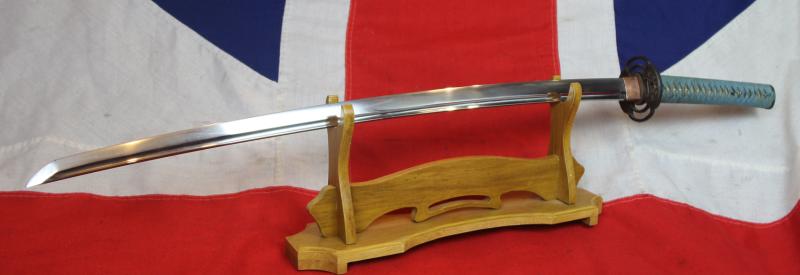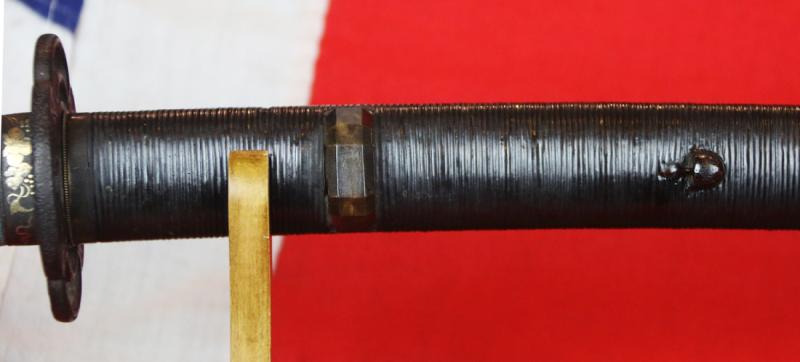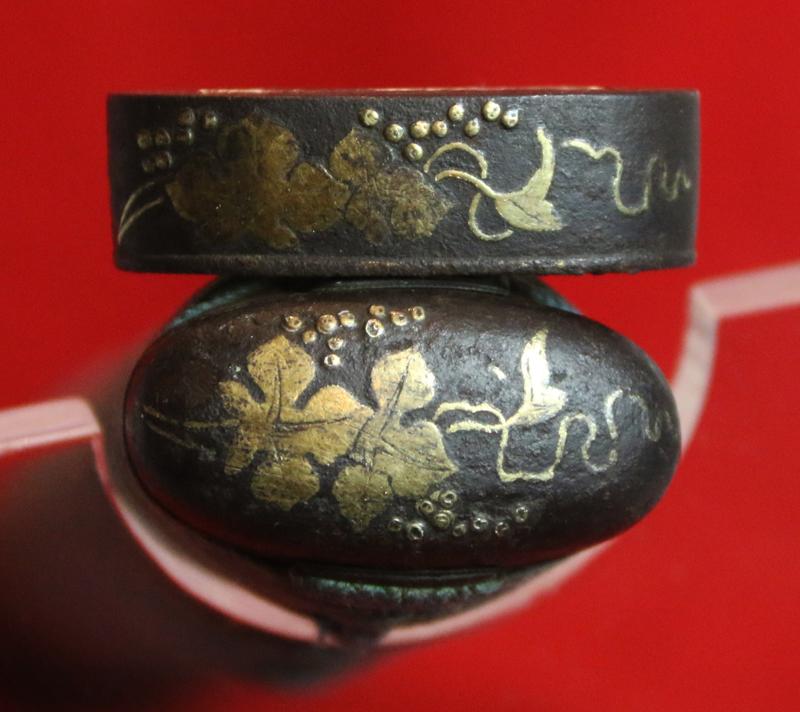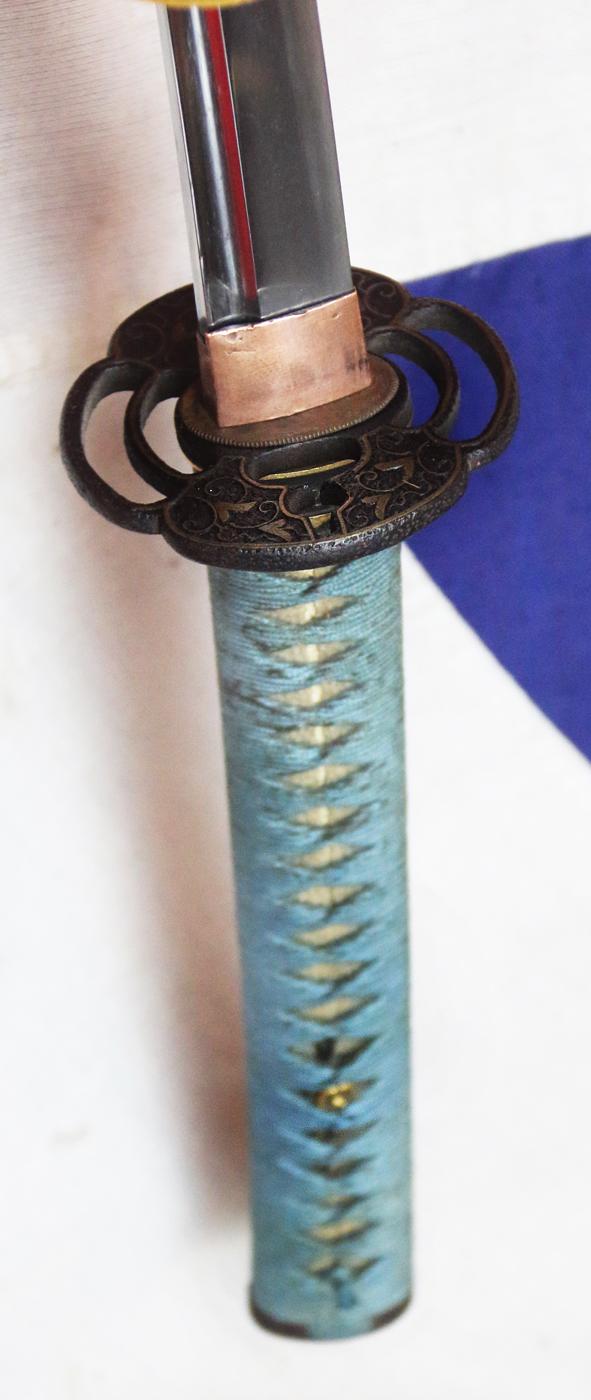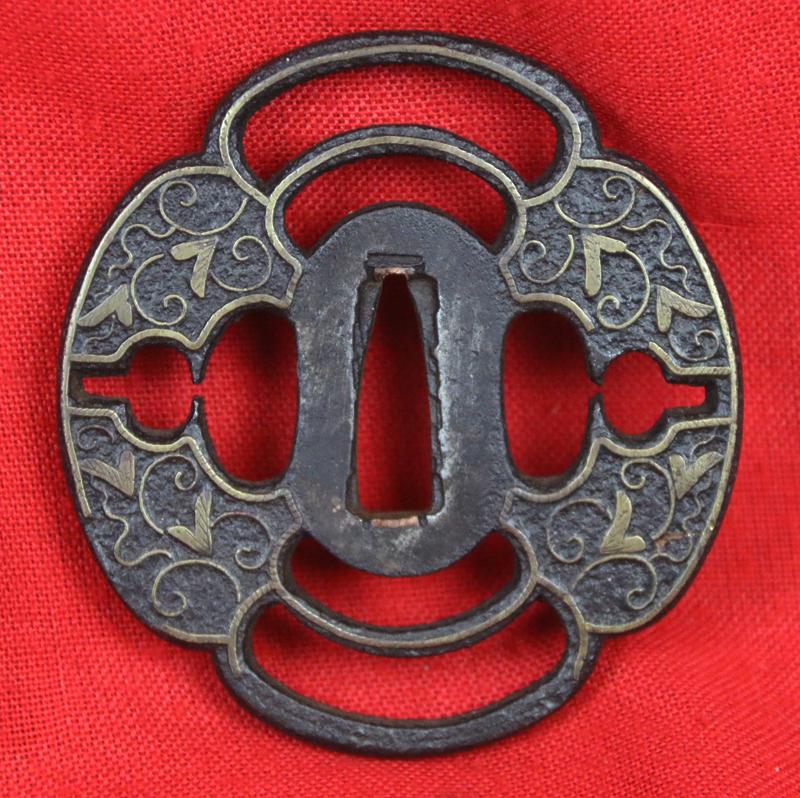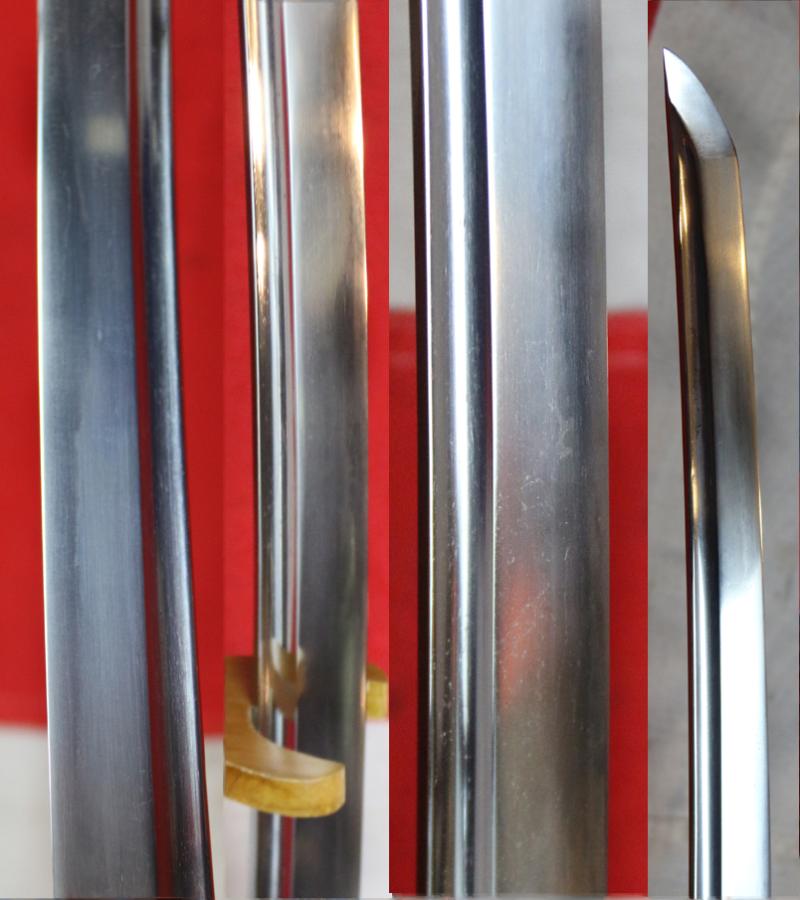A Singularly Fabulous Ancient Koto Period 15th Century Katana Circa 1480. Very Likely Formerly a Nodachi Great Sword. Officially Shortened by Bakufu Edict To Katana Length in 1617. With Stunning Heianjo School Tsuba
A very fine and beautiful and most rare 600 year old Koto katana that looks absolutely spectacular, with an o-suriage blade, with full length hi groove, and with a notare hamon that undulates with extraordinary depth into the blade.
The tang has two intersperced mekugiana, {mounting peg holes} the current one being several inches from the other, which would indicate it was an incredibly long sword, a nodachi or odachi.
To qualify as an odachi, the sword in question must have had an original blade length over 3 shaku (35.79 inches or 90.91 cm).
However, as with most terms in Japanese sword arts, there is no exact definition of the size of an odachi.
The odachi's importance died off after the Siege of Osaka of 1615 (the final battle between Tokugawa Ieyasu and Toyotomi Hideyori). The Bakufu shogunal government set a law which prohibited holding swords above a set length (in Genna 3 (1617), Kan'ei 3 (1626) and Shoho 2 (1645)).
After the law was put into practice, odachi were cut down to the shorter legal size. This is one of the reasons why odachi are so rare.
Since then many odachi were shortened to use as katana, we feel this was when have been when this blade was shortened, likely in 1617.
Odachi or Nodachi were very difficult to produce because their length makes heat treatment in a traditional way more complicated: The longer a blade is, the more difficult (or expensive) it is to heat the whole blade to a homogenous temperature, both for annealing and to reach the hardening temperature. The quenching process then needs a bigger quenching medium because uneven quenching might lead to warping the blade.
The blade has no combat damage of any kind, just natural surface minuscule age pin prick marks, and it has been untouched since it came to England in the 1870's.
All original Edo mounts and saya, with Higo mounts inlaid with gold leaves and tendrils, and original Edo period turquoise blue tsuka-ito (柄糸) over gold and shakudo menuki (目貫):of flowers, on traditional giant rayskin samegawa.
The saya is finely ribbed with silk cord ribbing under black lacquer, with carved buffalo horn kurigata (栗形) and kaeshizuno (返し角) and It has a fine and large four lobed mokko gata tsuba (鍔 or 鐔) form, with punch marks, sekigane inserted in the nakago ana, a look of a great strength, and a lightly hammered ground to effect a stone like surface, on the both sides, from the natural folding of the plate. It is pierced in delicate manner on top and bottom with stylised warabite, bracken shoots, and on either side of the central opening with large irregular ryohitsu shaped apertures of two hisago. The iron plate is finely inlaid on both sides and on the rounded rim with a thin roped band made in brass, and decorated all around the edge in brass hirazogan in a design of bellflower blossoms, clementis leaves and tendrils, flushing to the surface, and known as Chinese grass or karasuka. The formal design in negative silhouette is straightforward, the lowering of the level of the surface between the rim and the seppadai contributes to a sense of stability, the metal has a deep purplish patina, and the entire guard has a rustic appearance. This very pleasing masterpiece exhibits a nice feel due to the simplicity of the design.
This ko sukashi work is the ultimate in simplification. this severe, unemotional work is a deep humanity that speaks to us today. This strict style marks the dividing line between youthful severity and older warm humanity. All of these traits make this an exceptoional work of Heianjo school, in a style influenced by workers of Yoshiro school of the Koike family in Kyoto and as a gift from one Daimyo to another. The size, quality of inlay, and condition all confirm the excellent craftsmanship characteristic of this school. This is probably a transition piece between the Onin and the Heianjo school. This style of tsuba often given the designation of Heianjo school, could also be from the last period of onin brass inlay style of the Muromachi period. Yoshiro tsuba are originated from the Heianjo Zogan school, active in the second half of the 16th century. Naomasa was the most famous member of the large Koike family school, he took the technique and style to the highest level. Early Edo period tsuba. 17th Century. Overall condition of the tsuba is excellent.
To place it in context as to just how old this sword is, in its British time-scale comparison, it was made, in Japan, in the era of the 'Wars of the Roses' between King Richard IIIrd and King Henry VIIth.
A long {28 inches in length} blade, measured tsuba to tip
Code: 24866
9450.00 GBP



